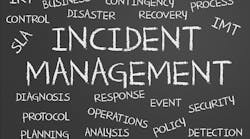VPPPA Safety+ 2019: Technology and Continuous Improvement for Emergency Response Plans
Every business should have an emergency response plan, nor matter if it is an office environment or a plant, said Greg Duncan, EHS & sustainability content manager for VelocityEHS.
Duncan explained to VPPPA Safety+ attendees about how continuous improvement and technology work hand-in-hand when it comes to effectively preparing for a chemical emergency or situation.
In the United States, most businesses tend to take a compliance-based approach, living to the letter of the law and doing the bare minimum to meet requirements. However, there is not a one-size-fits-alll method to risk mitigation.
"Stopping at just the requirements might not be safe enough for your facility," Duncan told the audience. "We want to take a continuous improvement approach so each time we run through it we're getting better."
Stages to building an effective emergency response plan include planning; organizing and equiping; training; exercises and drills; and evaluating and improving.
There are three keys to preparing for a chemical-related incident, according to Duncan:
1. Know what hazards are in your workplace. Maintain an up-to-date chemical inventory.
2. Ensure rapid access to safety data sheets.
3. Develop and maintain a strong training program.
Hands-on learning including demonstrations, work simulations, safety drills, performance-based training standards and educating workers about high-risk operations will allow for effective evacuation, improve response times and allow businesses to recover quickly. The key to ensuring a rapid response and plan execution is effective communication with all stakeholder groups.
"There is a lot of people involved in this process," Duncan said. "This doesn't happen in a silo."
Duncan identified 11 mistakes in developing an emergency response plan that potentially lead to poor evacuation times, delays in communication, injuries and fatalities:
- Gaps and inconsistencies with chemical inventory and written plans
- Gaps in safe work instructions
- Poor evacuation plans and maps
- Losing track of contracted workers and visitors
- Failure to update emergency actions plans
- Lack of stakeholder buy-in
- Lack of funding for emergency response
- Not developing key stakeholder relations
- Waiting for the "right time" to plan
- Poor/insufficient emergency drills
- Weak command and control/leadership
An emergency response plan needs to be available digitally. The benefits of utilizing technology can assist businesses, workers and other stakeholder with digital safety data sheet (SDS) management and access; real-time chemical inventory; automated reporting; chemical storage location mapping; incident management with mobile reporting capabilities; incident analysis; mobile inspections; training; and safety meeting and drill scheduling.
"People find it easy and effective," Duncan said. "It helps to drive engagement that is so critical."

